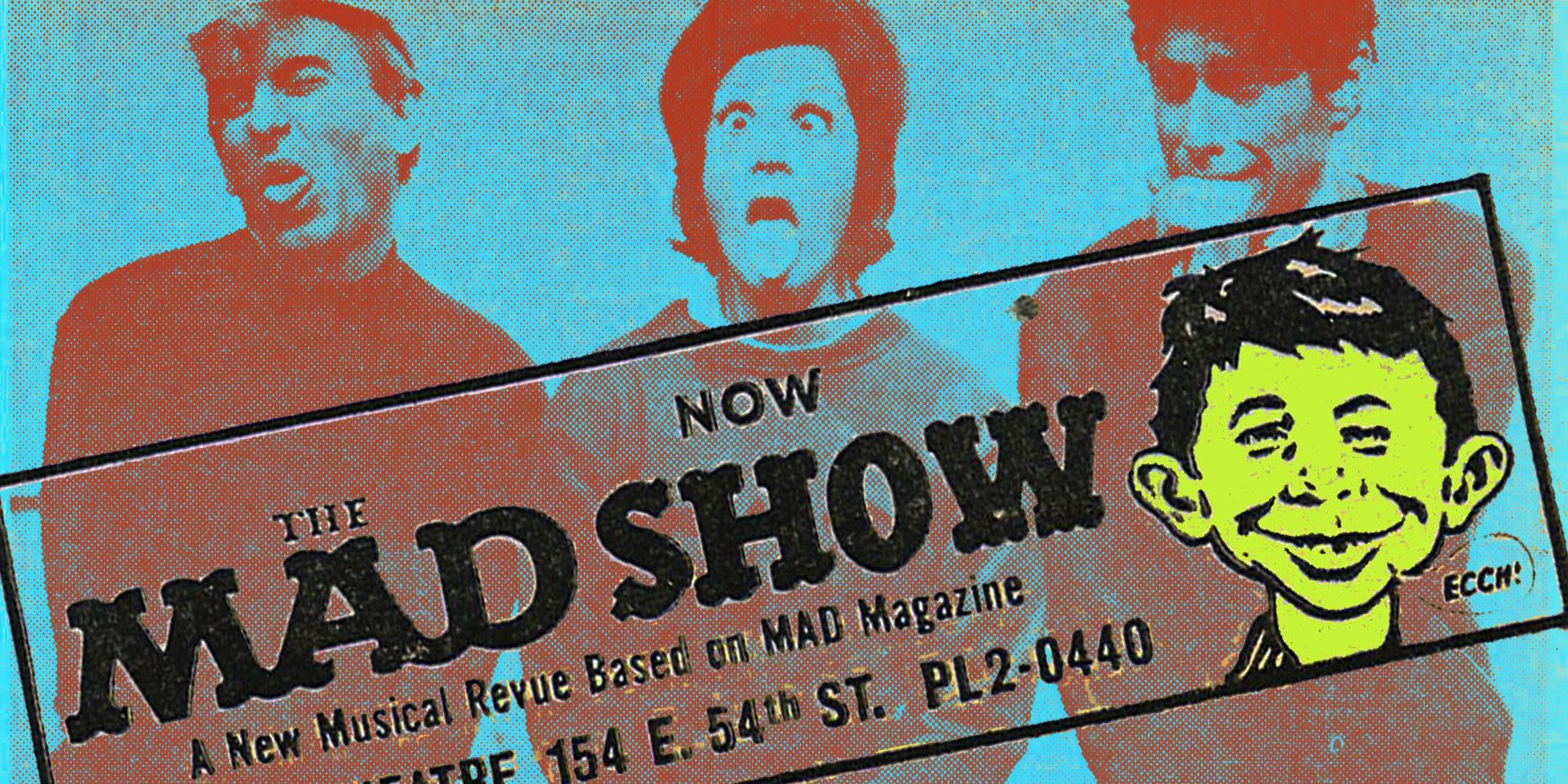Before Peanuts, Doonesbury and Spider-Man were ever adapted as musicals, Mad Magazine put on its own satirical stage production: The Mad Show.
The Mad Show, which premiered on January 9, 1966, at the Theatre De Lys in New York City, was an Off-Broadway musical with contributions by some pretty major names, including Joe Raposo, Sesame Street's future musical director; Jo Anne Worley, who later appeared on Laugh-In; Mary Rodgers, the daughter of acclaimed composer Richard Rodgers; and musical legend Stephen Sondheim, using the assumed name Esteban Rio Nido. The production was based around sketches written by Mad Magazine contributors Larry Siegel and Stan Hart.
By the time the musical arrived, Mad had been publishing for 14 years. While the publication originally started life as a comic, it later became a magazine to avoid the the strictures of the Comics Code Authority, which prohibited certain types of content, including anti-authority, pro-sex and other activities that could offend moral sensibilities. Avoiding the Comics Code meant Mad Magazine could be more irreverent than anything else kids were reading at that time. Mad featured pop culture parodies, bad puns and a sophisticated take on American media, militarism and consumerism, helping to shape the audience of Hair era of counterculture musicals. Indeed, the magazine's DNA can be found throughout the most madcap voices in comics culture and political comedy, and that style is apparent in The Mad Show.
The cast -- which was made up of MacIntyre Dixon, Dick Libertini, Jo Anne Worley, Linda Lavin and Paul Sand -- ran around a crowded stage with fright wigs, hit the onstage piano player (Raposo) with a rubber chicken and had a pop-art influenced set featuring the ultimate mainstay of 1960s theatre: a step ladder. Of course, this was all very fresh at the time, and the production received fairly glowing reviews.
The songs themselves were scored by Mary Rodgers (Once Upon a Mattress), with lyrics by Siegel, Steven Vinaver and Sondheim, who was still more well known as a lyricist. Sondheim's contribution was a parody of "The Girl from Ipanema," a similarly sultry samba number called "The Boy From... ." Sung by Linda Lavin, the song tells a story of the unrequited love an oblivious young woman has for an obviously gay Castilian man. Most of the song is Lavin singing the guy's incredibly long winded hometown (the fictional "Tacarembo la Tumba del Fuego Santa Malipas Zacatecas la Junta del Sol y Cruz") and rhythmically catching her breath. Their love is doomed, as the boy moves away to start a salon in the Welsh town of Llanfairpwllgwyngyllgogerychwyrndrobwllllantysiliogogogoch. The song fits into the tradition of Mad's illustrated song parodies and is still performed as part of the Sondheim songbook. Other songs in The Mad Show include the socially conscious, "Hate Song;" the sports satire, "Football in Depth;" and the magazine's leitmotif, "Eccch!"

